Disclosure: This article contains affiliate links. We may earn a commission from purchases at no extra cost to you, which helps our travel content.
There's something magical about accommodations that tell stories—places where the walls themselves whisper histories of centuries past or where the absence of walls connects you intimately with landscapes that have remained unchanged for millennia. When my investment portfolio allowed me an unexpected two-week break this summer, I decided to indulge in what I call 'architectural whiplash'—experiencing the complete opposite ends of the accommodation spectrum in a single journey. From the meticulously preserved medieval buildings of Rothenburg ob der Tauber in Germany to the nomadic simplicity of luxury ger camps scattered across Mongolia's vast Gobi Desert, this journey wasn't just about crossing continents but crossing centuries of human shelter evolution. What began as research for a sustainable tourism investment turned into one of the most perspective-shifting experiences I've had since moving to Valencia. The contrast couldn't be more striking—or more illuminating about how deeply our surroundings shape our experience of place.
Rothenburg's Medieval Marvels: Where Timber Frames Tell Tales
Stepping into Rothenburg ob der Tauber feels like walking through a portal to medieval Europe—one that somehow escaped both World War bombing and the homogenizing effects of modern tourism. The town's preservation is so complete that you half-expect to see people in period dress going about daily business (beyond the occasional tour guide, that is).
I chose to stay at Hotel Gotisches Haus, a painstakingly restored 13th-century building whose name literally translates to 'Gothic House.' The timber-framed façade with its distinctive cross-beamed patterns represents some of the finest examples of medieval German architecture I've seen outside of architectural textbooks. What makes this accommodation special isn't just its age but how thoughtfully it balances historical authenticity with modern luxury.
My corner room featured slanted floors, exposed ceiling beams blackened by centuries of use, and windows with wavy, hand-blown glass—all original features. Yet these historical elements were complemented by a surprisingly comfortable bed, heated bathroom floors, and excellent Wi-Fi. This delicate balance is what luxury historical accommodations should aspire to.
Breakfast is served in what was once the home's great hall, complete with a massive stone fireplace where I imagine countless winter meals were prepared over the centuries. The hotel's owner, Herr Mueller, is a walking encyclopedia of the building's history, pointing out where medieval merchants once stored their wares and how the structure survived the Thirty Years' War.
During my four-night stay, I developed a routine of early morning photography walks along the town wall before the day-trippers arrived. The quality of light on the ancient stonework at dawn is something I'll never forget—that golden hour glow on weathered limestone creates textures that my camera absolutely loves. I found myself taking hundreds of detail shots of window frames, door hinges, and roofline variations that tell the story of how the town evolved over centuries.
For those planning a similar stay, I'd recommend bringing a travel tripod for those early morning and evening architectural shots—the narrow streets create challenging lighting conditions that often require longer exposures.
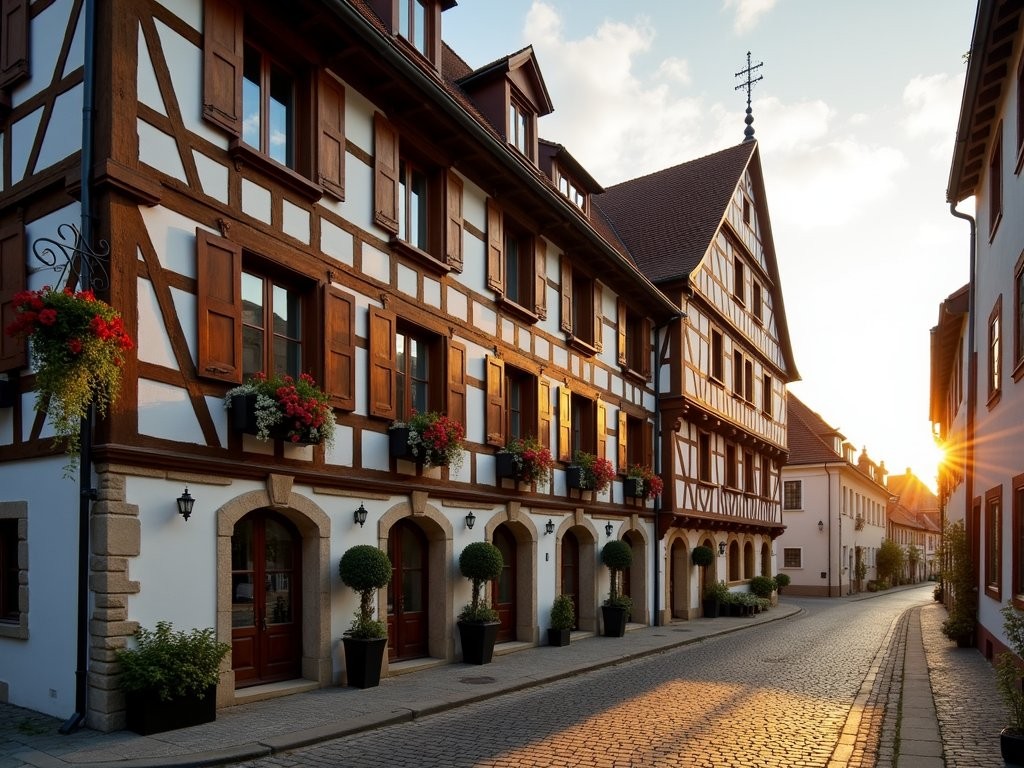
💡 Pro Tips
- Request a room facing the inner courtyard for the most authentic architectural views
- Ask for the medieval history tour with Herr Mueller—it's not advertised but is worth every euro
- Visit the town wall at sunrise for photographer's light without the crowds
Beyond Tourist Rothenburg: Finding Authentic Corners
While Rothenburg is undeniably a tourist destination (it's one of Germany's most visited small towns), there are still ways to experience it beyond the crowds that flood the main square between 10 AM and 4 PM. The secret? Timing and intentional wandering.
My investment work has taught me to look for value where others don't see it, and in Rothenburg, that value lies in the early mornings and evenings after the tour buses depart. By 7 PM, the town transforms back into something closer to its authentic self. Local residents emerge for evening strolls, and restaurants fill with German-speaking patrons rather than international visitors.
I discovered a small wine cellar called Weinstube am Klosterhof tucked away on a side street where the owner poured regional Franconian wines while explaining how the local terroir creates their distinctive minerality. These wines rarely make it beyond German borders, making this tasting experience particularly special. The cellar itself dates to the 15th century, with stone walls that have absorbed centuries of conversations.
For architecture enthusiasts, the town's less-visited corners reveal the most interesting details. I spent one afternoon sketching the varied window frames along Klingengasse, a narrow street where each house shows slightly different craftsmanship. A local carpenter passing by stopped to explain how these frames were assembled using joinery techniques that required no nails—a conversation that wouldn't have happened in the busier areas.
The town's architectural preservation extends to its defensive structures as well. Walking the complete circuit of the town walls provides a master class in medieval military engineering. I recommend taking a pocket flashlight for exploring the dimly lit tower interiors, where you'll find fascinating graffiti left by guards over the centuries.
What struck me most was how the preservation of these buildings isn't merely aesthetic—it's functional. These structures have housed continuous human activity for 500+ years, adapting to changing needs while maintaining their essential character. As someone who invests in sustainable tourism ventures, I found this to be a powerful example of the ultimate sustainable architecture: buildings designed to last centuries rather than decades.
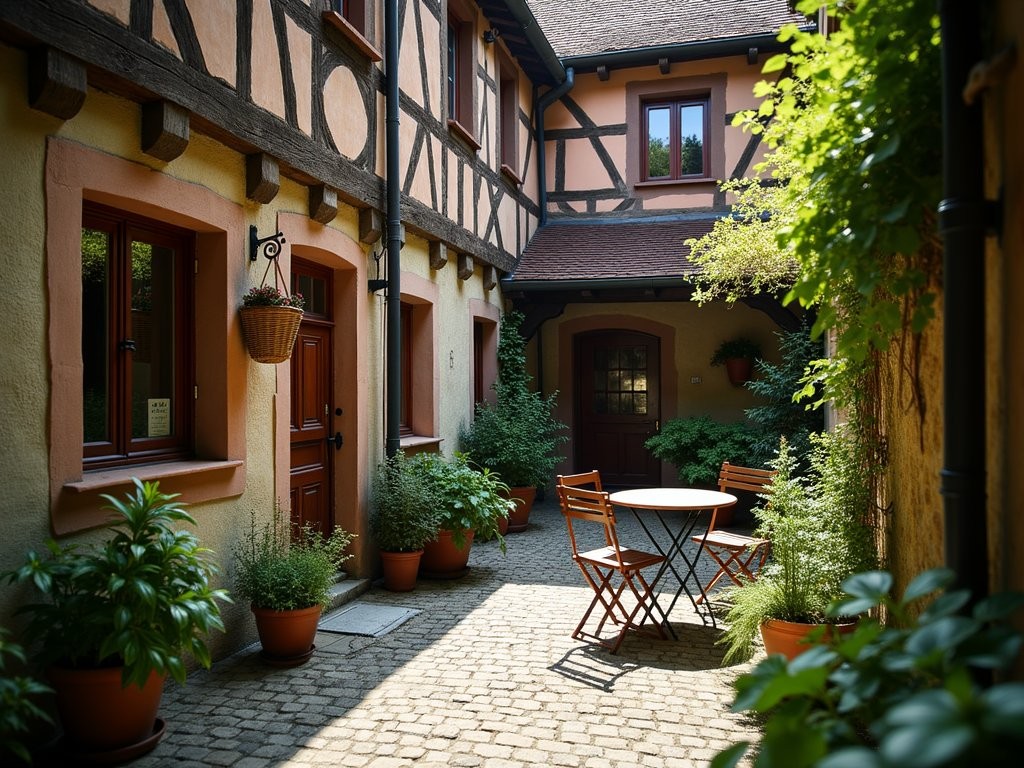
💡 Pro Tips
- Book dinner reservations after 8 PM for a more authentic local experience
- Explore the gardens behind the Medieval Crime Museum for a quiet spot to sketch or read
- Visit the town's bakeries at 6 AM to watch traditional pastries being made using centuries-old techniques
The Transition: From European Density to Asian Expanse
The journey from Rothenburg to the Gobi Desert represents more than just physical distance—it's a psychological shift from European density to Asian expanse that requires intentional transition time. After departing Germany, I scheduled a 24-hour layover in Istanbul—a city that has historically bridged East and West—before continuing to Ulaanbaatar, Mongolia's capital.
This transitional day proved invaluable. Istanbul's blend of European and Asian influences helped me mentally prepare for the dramatic shift in cultural context I was about to experience. I spent the afternoon at a traditional hammam, letting the steam and silence reset my senses after the visual richness of Rothenburg.
The flight from Istanbul to Ulaanbaatar takes approximately 7 hours, crossing vast stretches of Central Asia. I recommend requesting a window seat on the right side of the aircraft for views of the Altai Mountains as you approach Mongolia. The landscape below gradually transforms from cultivated fields to increasingly sparse settlements until you're flying over seemingly endless expanses of undeveloped terrain.
Ulaanbaatar itself deserves at least two days of exploration before heading to the Gobi. This rapidly developing city presents a fascinating contrast of Soviet-era architecture, gleaming new skyscrapers, and traditional ger districts. I stayed at the Shangri-La Hotel, which provided a comfortable base with excellent concierge services to help arrange my desert expedition.
Preparing for the Gobi requires thoughtful packing. Even in luxury ger camps, you'll want to bring items that address the desert's extreme conditions. A hydration backpack is essential for day excursions, as is high-SPF sunscreen and a wide-brimmed hat. The desert temperature can swing from 95°F (35°C) during the day to near freezing at night, even in summer.
I arranged my Gobi experience through a specialized tour operator that works exclusively with sustainable luxury camps. This allowed me to combine multiple camps in different desert regions, maximizing exposure to varied landscapes. The journey from Ulaanbaatar to the Gobi typically involves a domestic flight to Dalanzadgad followed by overland travel in 4×4 vehicles. The moment when the last paved road disappears behind you marks the true beginning of the Gobi experience.
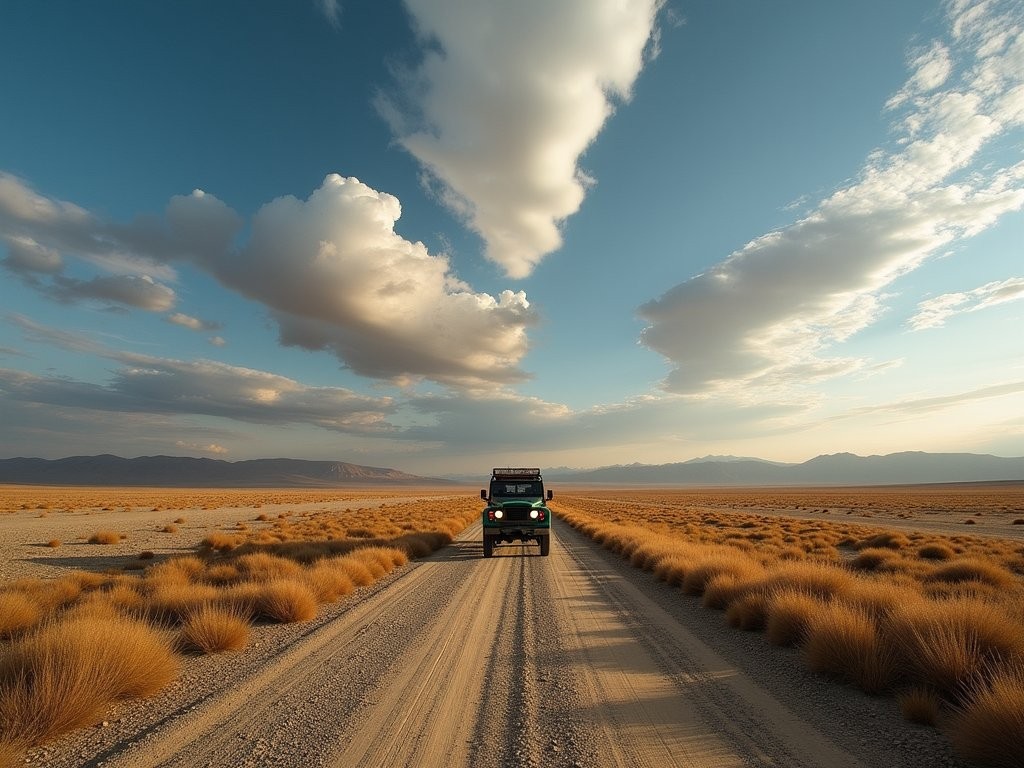
💡 Pro Tips
- Pack a good quality dust mask for unexpected desert winds
- Download offline maps before leaving Ulaanbaatar as there's minimal cell coverage in the Gobi
- Exchange currency in Ulaanbaatar—there are no ATMs once you're in the desert
Luxury in the Wilderness: Mongolia's Elite Ger Camps
The concept of 'luxury wilderness' might seem contradictory until you've experienced Mongolia's elite ger camps. These remarkable accommodations have reimagined the traditional nomadic dwelling—the round, felt-covered structure Mongolians have used for centuries—into something that satisfies modern luxury expectations while maintaining cultural authenticity.
My first stay was at Three Camel Lodge in the Gobi's northern reaches. From a distance, the camp blends seamlessly into the landscape—a collection of white gers arranged in a traditional pattern. It's only upon closer inspection that you notice the subtle luxury elements: hand-painted wooden doors, solar panels discreetly positioned, and a main lodge built using traditional techniques but with contemporary proportions.
The gers themselves represent a masterclass in thoughtful design. Traditional felt and canvas exteriors maintain authentic appearances while concealing modern comforts within. My ger featured a king-sized bed positioned to face east (following Mongolian tradition), heated wooden floors, a surprisingly spacious bathroom with rainfall shower, and—most impressively—entirely solar-powered electricity.
What makes these accommodations truly special is how they frame the landscape. Each ger has a clear dome at its center that traditionally allowed smoke to escape but here serves as a skylight for stargazing. Lying in bed watching the impossibly bright Milky Way through this opening created one of those travel moments that redefines your understanding of luxury. True opulence, I realized, isn't about marble and gold fixtures—it's about experiencing extraordinary natural beauty in comfort.
The dining experience at these camps deserves special mention. Despite being hundreds of miles from any market, the chefs create remarkable fusion cuisine using locally sourced ingredients. One memorable dinner featured traditional Mongolian dumplings filled with foraged wild herbs and served alongside airag (fermented mare's milk)—a combination of flavors I'm still trying to recreate in my Valencia kitchen.
For capturing the extraordinary night skies, I was grateful to have packed my travel tripod and a fast lens. The Gobi's lack of light pollution creates astrophotography opportunities that photographers dream about.
What impressed me most was how these camps maintain their luxury standards while operating with minimal environmental impact. Water is meticulously conserved, waste is processed on-site, and many camps are developing relationships with local nomadic families who provide traditional dairy products and occasionally cultural demonstrations of horsemanship or music.
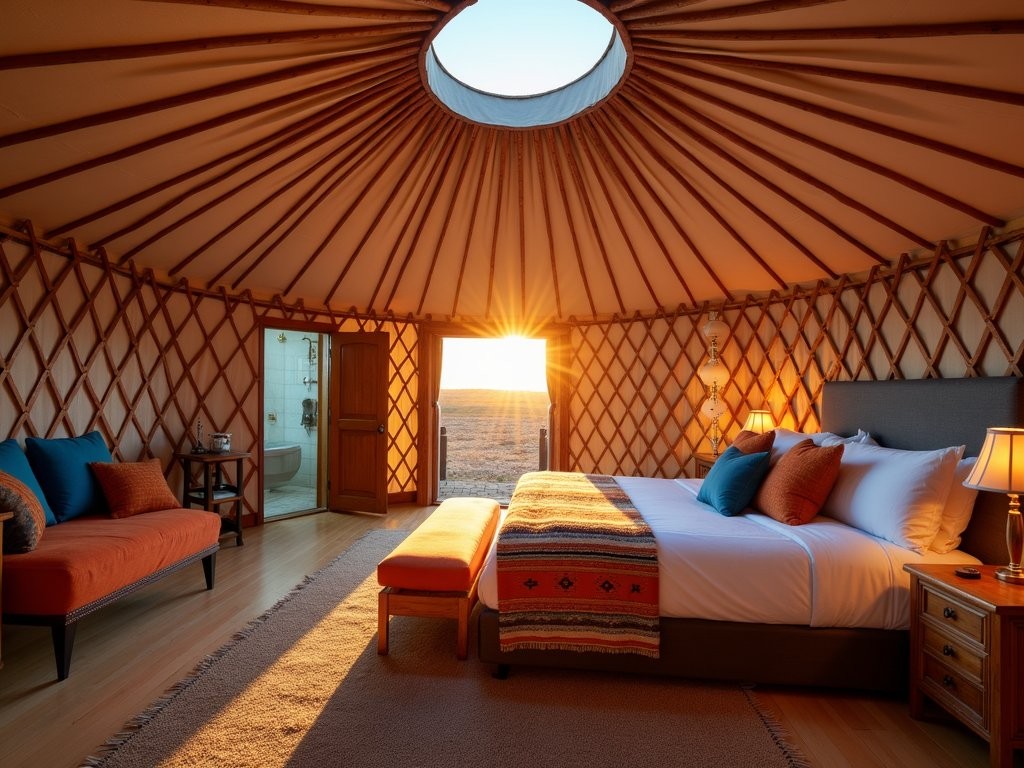
💡 Pro Tips
- Request a ger positioned away from the main lodge for better stargazing opportunities
- Pack slip-on shoes for easy removal when entering gers (following Mongolian custom)
- Bring a good quality camera with manual settings for night photography—the stars are incredible
Desert Days: Activities in the Gobi's Emptiness
The apparent emptiness of the Gobi Desert is deceptive. What initially seems like a barren landscape reveals itself, with knowledgeable guidance, to be a complex ecosystem filled with surprising biodiversity and geological wonders. The luxury camps excel at providing experiences that connect guests with this misunderstood environment.
Each morning began with a choice: Would I explore the singing sand dunes of Khongoryn Els? Track endangered snow leopards in the foothills? Visit nomadic families moving their summer camps? The diversity of options in this seemingly empty landscape continually surprised me.
One particularly memorable day involved a sunrise hike through the Flaming Cliffs of Bayanzag, where paleontologist Roy Chapman Andrews discovered the first dinosaur eggs in the 1920s. As dawn broke over the orange sandstone formations, my guide pointed out fossilized fragments still emerging from the eroding cliffs. The knowledge that I was walking where dinosaurs had nested 80 million years ago created a profound sense of temporal perspective that few other travel experiences have matched.
Another highlight was a day spent with a nomadic family who had temporarily settled near our camp. The grandmother taught me to make traditional Mongolian milk tea while explaining (through our translator) how her family had maintained their nomadic lifestyle despite Soviet-era pressures to settle permanently. Their ger—a true working home rather than a tourist accommodation—demonstrated how this dwelling design has remained essentially unchanged for centuries precisely because it perfectly suits the environment and lifestyle.
For photography enthusiasts, the Gobi offers extraordinary opportunities. The quality of light here—particularly during the golden hours—creates dramatic shadows and reveals subtle color variations in the landscape that appear monochromatic at midday. I found my polarizing filter essential for managing the harsh desert light and enhancing the sky's already dramatic blue.
Camel trekking deserves special mention. While it's admittedly a tourist activity, riding Bactrian (two-humped) camels across the dunes with a nomadic guide provides insights into traditional transportation methods that shaped Mongolian culture. These animals move with surprising grace across terrain that would defeat most vehicles, and the elevated perspective reveals landscape patterns invisible from ground level.
The most luxurious experience, however, was simply having time to absorb the silence. One afternoon, our guide drove me to a remote location and simply left me (with water and emergency communication) for three hours of complete solitude. In our hyperconnected world, experiencing absolute silence and seeing no evidence of human presence to the horizon in any direction is perhaps the rarest luxury of all.
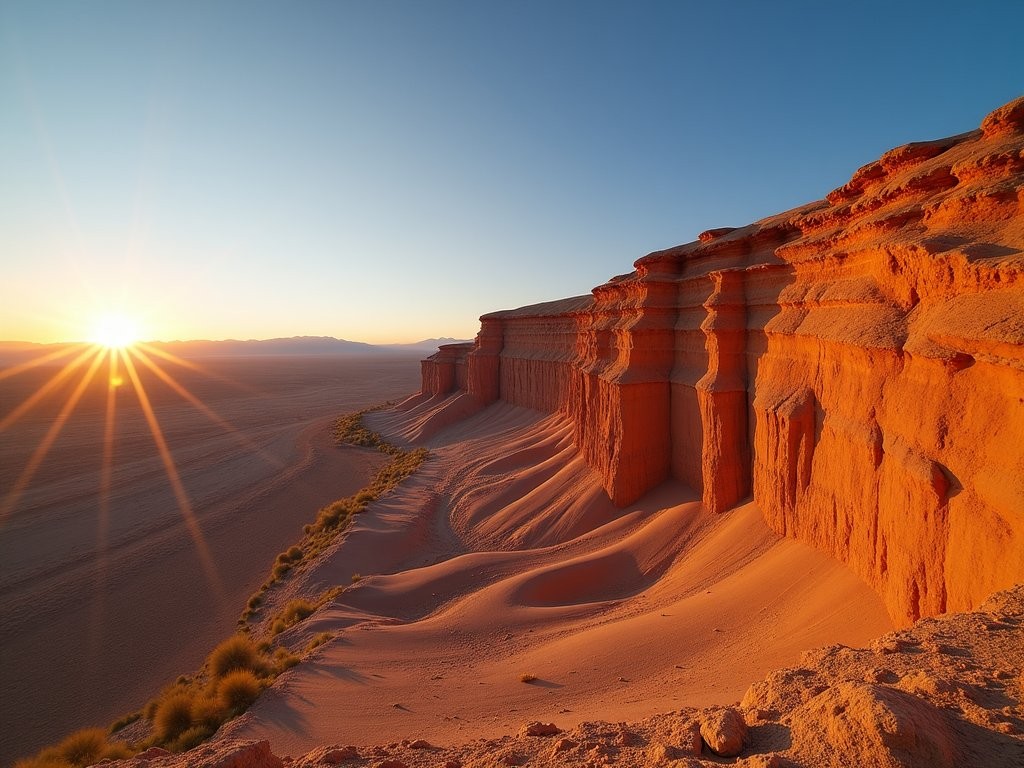
💡 Pro Tips
- Schedule your Flaming Cliffs visit for either sunrise or sunset when the colors are most vibrant
- Bring binoculars for wildlife spotting—the desert hosts surprising biodiversity
- Request a traditional music performance in your camp—the throat singing is hypnotic under desert stars
The Architecture of Nowhere: What Gers Teach Us About Essential Living
As someone obsessed with architectural spaces, the ger represents a fascinating study in essential design. These structures—developed over thousands of years of nomadic life—contain profound lessons about sustainable living that our modern fixed dwellings often ignore.
The basic ger design consists of a circular wooden lattice frame covered with layers of felt and canvas. This shape is no accident—it perfectly distributes the force of the region's notorious winds while maximizing interior space with minimal materials. The central compression ring (toono) and radiating roof poles (uni) create a structure that can be assembled or disassembled in hours yet withstand extreme weather conditions for decades.
What struck me most was the ger's perfect adaptation to its environment. The felt covering—made from sheep's wool—provides remarkable insulation against both heat and cold. During summer days when outside temperatures approached 95°F (35°C), my ger maintained a comfortable interior temperature without any mechanical cooling. At night, when temperatures dropped dramatically, that same insulation retained the day's warmth.
The interior organization follows strict traditional patterns that reflect Mongolian cosmology and practical needs. The door always faces south (away from prevailing winds), the stove sits center, men's items belong on the west side, women's on the east, and the northern area (khoimor) is reserved for honored guests and spiritual items. This arrangement creates an intuitive flow that makes even a modest space feel organized and sufficient.
Luxury ger camps have thoughtfully adapted these traditional elements. At Three Camel Lodge, my ger maintained all the traditional structural elements while incorporating a bathroom pod that connected seamlessly to the main space. The designers had cleverly positioned modern necessities within the traditional framework without disrupting the essential character.
For travelers interested in architectural sustainability, I recommend bringing a field sketchbook to document the ingenious construction details. I filled several pages with diagrams of how the roof structure connects to the wall lattice using only tension straps—no nails or screws.
The most profound lesson from ger architecture is its inherent sustainability. Every component can be repaired, replaced, or eventually returned to the earth. Nothing is permanent, yet the design itself has remained sustainable for centuries. As I invest in sustainable tourism ventures, these principles of adaptable, minimal-impact design have become central to my evaluation criteria.
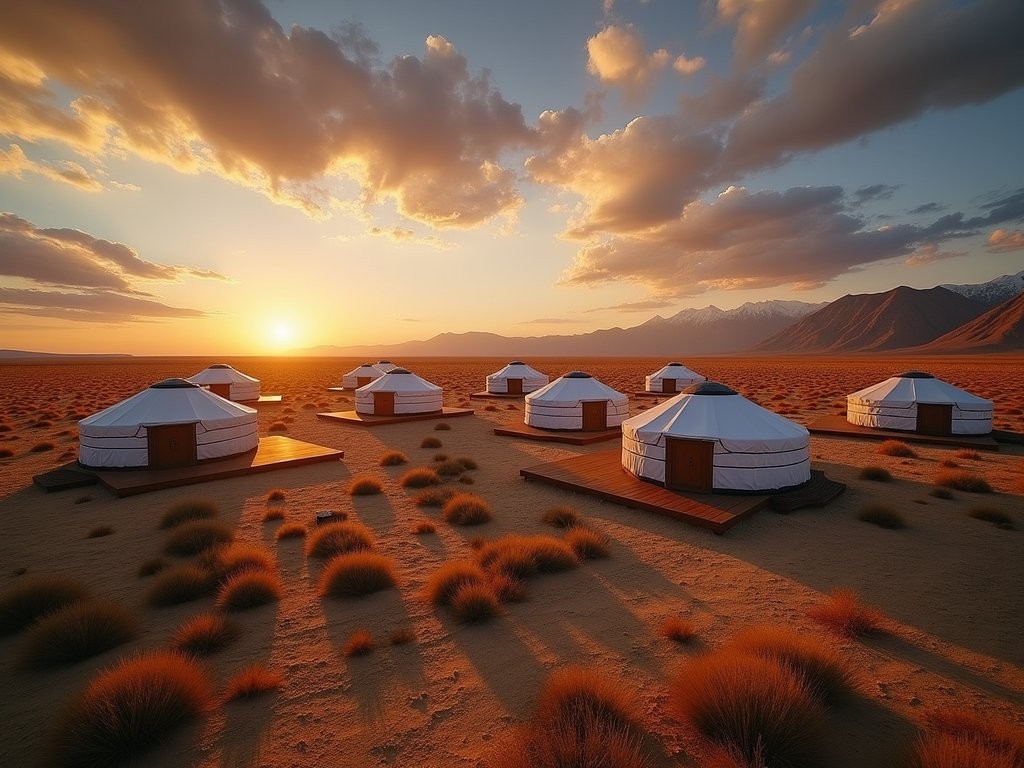
💡 Pro Tips
- Ask your camp staff for a ger construction demonstration—many camps keep a traditional ger that guests can help assemble
- Notice how the interior temperature changes throughout the day without any mechanical heating or cooling
- Study how different camps have modified traditional designs to incorporate modern amenities without losing cultural authenticity
Final Thoughts
As my flight lifted from Ulaanbaatar's runway, carrying me back toward the architectural density of Europe, I found myself reflecting on what these contrasting accommodations had taught me. In Rothenburg, I'd experienced how buildings can anchor human history, preserving stories across centuries through tangible materials and spaces. In the Gobi, I'd learned how structures can embody freedom through their very impermanence, adapting perfectly to both environment and lifestyle without imposing upon either.
These lessons have profoundly influenced my approach to sustainable tourism investments. The most successful accommodations—regardless of their luxury level—are those that maintain authentic connections to their cultural and environmental contexts while thoughtfully incorporating modern comforts. Whether in a 700-year-old German inn or a nomadic felt dwelling, this balance creates the most meaningful guest experiences.
If you're considering your own journey of contrasts, I encourage you to seek accommodations that tell stories—places where the very act of sleeping, eating, and simply being becomes a deeper connection to the destination. After all, we don't merely stay in places when we travel; we inhabit them, however briefly. And in that inhabitation lies the true transformative power of thoughtful travel.
✨ Key Takeaways
- Contrasting accommodation styles in a single journey creates deeper appreciation for human adaptability
- Luxury is increasingly defined by authentic experiences and environmental harmony rather than traditional opulence
- The most memorable stays are those that maintain cultural authenticity while thoughtfully incorporating modern comforts
📋 Practical Information
Best Time to Visit
June-August for both destinations (warm days in Rothenburg, mild temperatures in the Gobi)
Budget Estimate
$12,000-15,000 for two weeks including premium accommodations, international/domestic flights, and guided experiences
Recommended Duration
4-5 days in Rothenburg, 7-8 days in the Gobi Desert, plus transition days
Difficulty Level
Intermediate - Requires Comfort With Remote Locations And Significant Cultural Contrasts

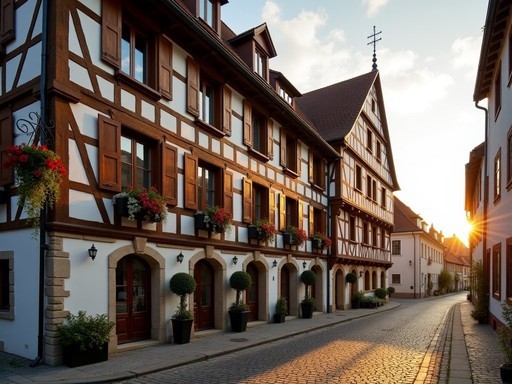
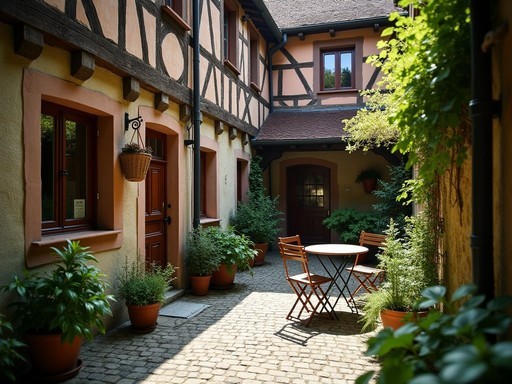

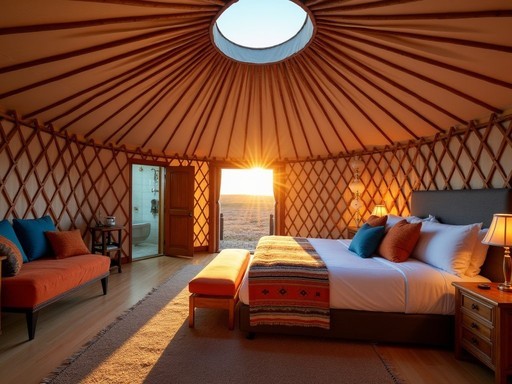
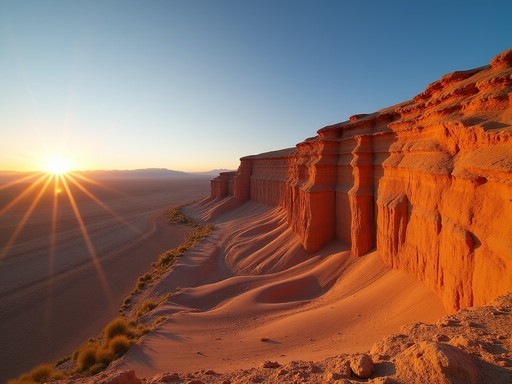
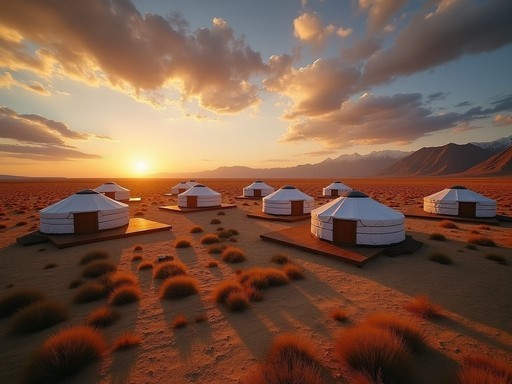




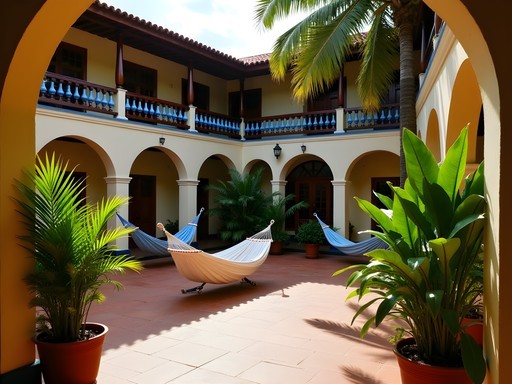
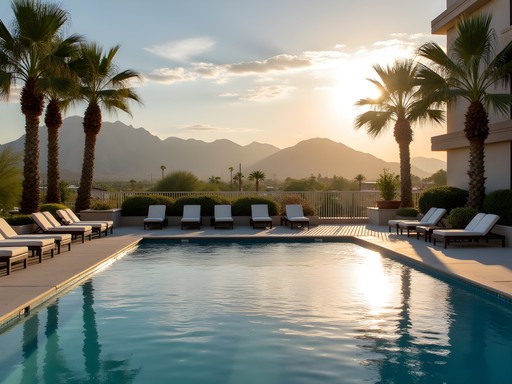

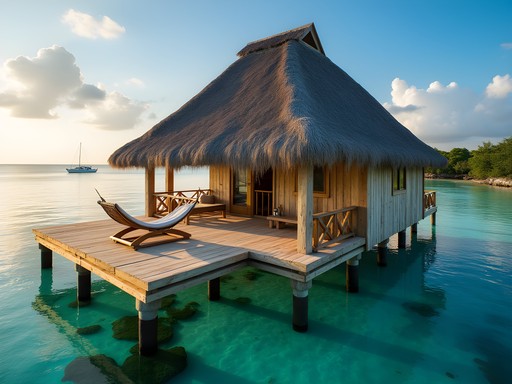

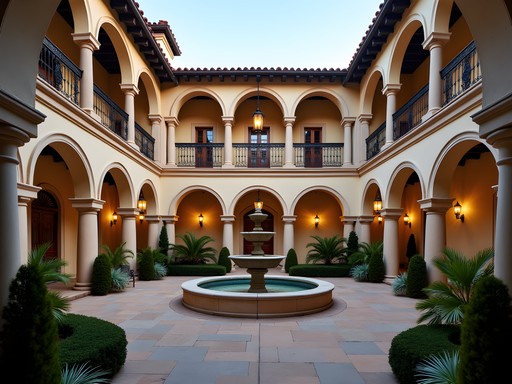
Comments
globehopper
Those ger camp photos are incredible! Adding Mongolia to my bucket list immediately!
Dylan Turner
Excellent juxtaposition of experiences, Claire. For those interested in the luxury ger experience, I recommend extending beyond the typical Three Camel Lodge option (though it's excellent). The Gobi Nomad Lodge offers a more intimate experience with only 10 gers but the same level of comfort. Their sustainability initiatives are also noteworthy - they've implemented a comprehensive water recycling system that's impressive given the desert location. As for Rothenburg, consider visiting during their imperial city festival in September when historical reenactments bring those medieval buildings to life in a way that regular tourism doesn't capture.
coolphotographer
I've done Rothenburg but Mongolia feels so intimidating! How difficult was it to arrange the ger camp stays? Did you book in advance or when you arrived?
Adam Nichols
Not Claire, but I can tell you the luxury camps definitely need advance booking - they fill up during high season (June-August). For family stays, a local guide can usually arrange those with less notice. The logistics are why many travelers opt for a pre-arranged tour, even independent travelers like myself.
sunsetmate
Those photos of the Gobi sunset from your ger entrance are STUNNING! Added to my dream destinations!
summerwalker
Rothenburg was on our Germany itinerary last year, but we only did it as a day trip from Munich. Big mistake! After reading this, I wish we'd stayed overnight to experience those medieval inns. The crowds thinned around 4pm when the tour buses left, and I bet the evening atmosphere was magical. For anyone planning a visit, don't miss the Night Watchman's Tour - it was the highlight of our brief time there. And make sure you have a good map or travel guide to find those authentic corners Claire mentioned!
wanderingfoodie
Beautiful post! Going to Rothenburg in September - any specific restaurant recommendations for authentic local food?
escapehero
Not the author but try Altfränkische Weinstube! Hidden gem with amazing Franconian dishes and local wines. Get the Schäufele if they have it!
wanderingfoodie
Thanks for the tip! Just saved it to my itinerary!
hikingseeker
Those ger camps look INCREDIBLE! The contrast between ancient German buildings and Mongolian nomadic structures is exactly why I travel. Just added both to my bucket list! Did you have any language barriers in either place?
wanderlover
Did you feel safe as a solo traveler in Mongolia? Planning a trip for next summer and debating between a tour or going independently.
Claire Hawkins
Mongolia felt incredibly safe! That said, the logistics can be challenging without a guide. I'd recommend a small group tour or hiring a local driver/guide rather than completely solo, especially for the Gobi portions.
Adam Nichols
Claire, your contrast between the confined medieval spaces of Rothenburg and the expansive openness of the Gobi is brilliantly observed. I spent three weeks traveling through Mongolia last summer, and the transition from urban environments to those ger camps creates a psychological shift that's hard to articulate. The silence at night in the Gobi is almost tangible. One tip for readers: while the luxury ger camps are amazing, consider splitting your time between those and at least one traditional family-hosted ger for the full spectrum of experiences.
moonwanderer
Just got back from Rothenburg last month and stayed in one of those timber-framed inns you mentioned! The creaky floors and tiny doorways (kept bumping my head lol) made it feel like stepping back in time. Did anyone else find the modern bathrooms kind of jarring against all that medieval charm? Still, waking up and looking out at those cobblestone streets before the day tourists arrived was magical.
Dylan Turner
The bathroom juxtaposition is part of the charm! I've found the best properties maintain that balance between historical authenticity and modern convenience. Which inn did you stay at specifically?
moonwanderer
We stayed at Gasthof Goldener Greifen. Not the fanciest but felt super authentic!
Venture X
Premium card with 2X miles, $300 travel credit, Priority Pass